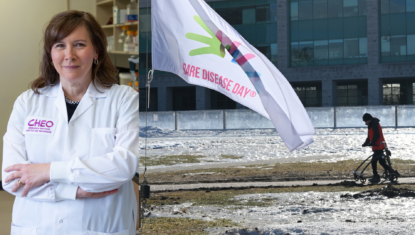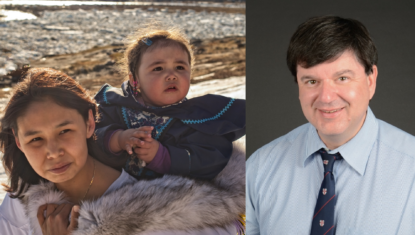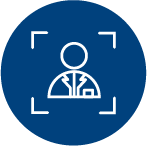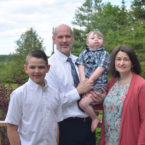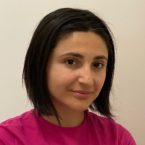The Regional Genetics Program at CHEO conducts research in virtually all areas of clinical and laboratory genetics.
Areas of research include, but are not limited to:
- Rare disease gene discovery
- Describing new genetic conditions
- Finding new clinical or laboratory characteristics of existing genetic conditions
- Finding new ways to test for genetic conditions
- Learning about the impact of genetic conditions on patients and families
- Finding the best way to provide genetic counseling to patients and families
Related News
Research Projects
-
First reports of primary ciliary dyskinesia caused by a shared DNAH11 allele in Canadian Inuit
23/04/2023
The discovery of this homozygous DNAH11 variant in widely disparate parts of the Nunangat (Inuit homelands) suggests this is a founder mutation that may be widespread in Inuit. Thus, PCD may be an important cause of chronic lung, sinus, and middle ear disease in this population. Inuit with chronic lung disease, including bronchiectasis or laterality defects, should undergo genetic testing for PCD. Consideration of including PCD genetic analysis in routine newborn screening should be considered in Inuit regions.
-
Standardized growth charts for children with osteogenesis imperfecta
15/03/2023
Our standardized OI type- and sex-specific growth charts can be used to assess the growth of individuals with OI from infancy to adulthood.
-
From “ACAN” to “I CAN”: Restoring wellness in a boy with severe osteochondritis dissecans through diagnostic precision combined with optimal medical, surgical and rehabilitation management
18/02/2023
The optimal management of atypical osteochondritis dissecans with multi-joint involvement and other morphological atypia requires multidisciplinary care. The inclusion of comprehensive bone health and metabolism as well as genetic investigations provided important information to help guide treatment in this case.
-
Outcome of over 1500 matches through the Matchmaker Exchange for rare disease gene discovery: The 2-year experience of Care4Rare Canada
01/01/2022
Matchmaking through the MME is an effective way to investigate novel candidate genes; however, it is a labor-intensive process. Engagement from the community to contribute phenotypic, genotypic, and inheritance data will ensure that matchmaking continues to be a useful approach in the future.
-
Modeling adult COX-2 cerebrospinal fluid pharmacokinetics to inform pediatric investigation
01/11/2021
Transfer of unbound COX-2 inhibitors from plasma to CSF compartment can be described with a delayed effect model using an equilibration rate constant to collapse observed hysteresis. An additional transfer factor was required to account for passage across the blood-brain barrier. Use of a target concentration strategy for dose and consequent plasma (total and unbound) and CSF concentration prediction could be used to inform pediatric clinical studies.
-
No association between dopaminergic polymorphisms and response to treatment of binge-eating disorder
20/05/2021
Future studies should examine a greater variety of dopaminergic polymorphisms, other candidate genes that target other neurotransmitter systems, as well as examine their impact on both behavioral and pharmacological-based treatment for BED.
-
MCART1/SLC25A51 is required for mitochondrial NAD transport
01/10/2020
Nicotinamide adenine dinucleotide (NAD) is an essential cofactor in redox metabolism and metabolic signaling. As cofactors of metabolic enzymes, NAD+ and its reduced form, NADH, function in redox re-actions in central metabolic pathways including glycolysis, tricarboxylic acid (TCA) cycle, oxidative phosphorylation, and one-carbon metabolism and control the direction of flux through these pathways. As a cosubstrate of the sirtuins and poly-(ADP-ribose) polymerases, NAD+ mediates posttranslational modification of metabolic enzymes, DNA repair and chromatin-modifying proteins, and other factors involved in stress response and signaling pathways that connect metabolism to different physiological responses (1). NAD levels decline in aging, and administration of NAD precursors is currently being tested in the clinic as a measure to prevent age-associated diseases [(2, 3); clinicaltrials.gov].
-
Assessment of longitudinal bone growth in osteogenesis imperfecta using metacarpophalangeal pattern profiles
27/07/2020
COL1A1 and COL1A2 mutations affect bone growth not only by inducing fractures and bone deformities, but also through longitudinal growth deficits in bones that do not fracture or deform.
-
Musculoskeletal phenotype in two unrelated individuals with a recurrent nonsense variant in SGMS2
06/05/2020
Bisphosphonates seem to be effective at treating SGMS2-associated osteoporosis.
-
Incidence, Risk Factors, and Mortality Associated With Orofacial Cleft Among Children in Ontario, Canada
12/02/2020
These findings suggest that despite decreasing incidence of OFC, children with OFC should be monitored closely for adverse health outcomes.
-
Mendelian bone fragility disorders
01/09/2019
Interestingly, large sequencing databases indicate that there are about 10 times more carriers of COL1A1/COL1A2 variants that should lead to OI than there are individuals with a diagnosis of OI.
-
ALU transposition induces familial hypertrophic cardiomyopathy
01/09/2019
Our results demonstrate that haploinsufficiency resulting from MYBPC3 complete deletion, potentially mediated by Alu recombination, is an important disease mechanism in cardiomyopathy and emphasizes the importance of copy number variation analysis in patients clinically suspected of HCM.
-
Salbutamol modifies the neuromuscular junction in a mouse model of ColQ myasthenic syndrome
04/07/2019
Motor neurons contact their target muscle fibres at highly specialised chemical synapses, neuromuscular junctions (NMJ).
-
Adopting High-Resolution Allele Frequencies Substantially Expedites Variant Interpretation in Genetic Diagnostic Laboratories
01/07/2019
these data demonstrate that implementing FAF thresholds may considerably decrease the amount of variant interpretations and significantly reduce the cost of genetic testing for clinical genetic laboratories, without compromising the accuracy of genetic diagnostic services.
-
Genetic Diagnostic Testing for Inherited Cardiomyopathies: Considerations for Offering Multi-Gene Tests in a Health Care Setting
01/05/2019
Our genetics diagnostic laboratory has been providing clinical diagnostic testing for ICs since 2012. We began by testing nine genes and expanded our panel by fivefold in 2015.
-
Analyses of Adverse Drug Reactions-Nationwide Active Surveillance Network: Canadian Pharmacogenomics Network for Drug Safety Database
04/03/2019
Adverse drug reactions (ADRs) are a major problem in modern medicine, representing up to the fourth‐highest cause of mortality.
-
PLPHP deficiency: clinical, genetic, biochemical, and mechanistic insights
01/03/2019
The vitamin B6-responsive disorders (B6RDs) are a clinically and genetically heterogeneous group of rare, autosomal recessive conditions (Clayton, 2006) with the hallmark feature of seizures uniquely responsive to treatment by the B6 vitamers pyridoxine and/or pyridoxal-5′-phosphate (PLP) (Baumgartner-Sigl et al., 2007; Basura et al., 2009). PLP is a cofactor for over 160 distinct catalytic functions (Percudani and Peracchi, 2009), including enzymes involved in glucose, lipid and amino acid metabolism (John, 1995; Percudani and Peracchi, 2003; Eliot and Kirsch, 2004), and for the synthesis of neurotransmitters, making it an essential vitamer for normal brain function (Surtees et al., 2006).
-
A phase 3 randomized study evaluating sialic acid extended-release for GNE myopathy
25/01/2019
This study provides Class I evidence that for patients with GNE myopathy, Ace-ER does not improve muscle strength compared to placebo.
-
Epilepsy genetics: Current knowledge, applications, and future directions
01/07/2018
Drug screening with in vitro and in vivo models of epilepsy can potentially facilitate new treatment strategies.
-
Reinterpretation of sequence variants: one diagnostic laboratory’s experience, and the need for standard guidelines
02/03/2018
Ongoing variant reinterpretation is required to maintain the highest standards for delivering genetics laboratory services.
-
Pyridoxine-dependent epilepsy in zebrafish caused by Aldh7a1 deficiency
01/12/2017
PYROXIDINE-DEPENDENT epilepsy (PDE, MIM #266100) is a rare autosomal recessively inherited metabolic disease (Gospe 2017) in which intractable and recurrent neonatal or infantile seizures are alleviated uniquely by high doses of pyridoxine (Pyr, vitamin B6) or pyridoxal 5′-phosphate (PLP) (Baxter 2001; Mills et al. 2006; Stockler et al. 2011). When untreated, PDE can lead to death, usually of status epilepticus (Gospe 2017). This condition is caused by mutations in the lysine degradation gene ALDH7A1 (Mills et al. 2006) that encodes α-aminoadipic-semialdehyde-dehydrogenase, which is also known as “Antiquitin” (Lee et al. 1994) due to its remarkable level of conservation through evolution (Supplemental Material, Figure S1). Loss of ALDH7A1 enzyme function leads to the pathogenic accumulation of the lysine intermediates aminoadipate semialdehyde (AASA) and its cyclic equilibrium form piperideine 6-carboxylate (P6C) in tissues including the central nervous system (CNS) [4] (Figure 1). P6C has been shown to react with and inactivate PLP (the active form of vitamin B6), a cofactor for over 140 enzymes including those involved in neurotransmission (Percudani and Peracchi 2003). It is thus hypothesized that the local or global depletion of PLP results in the Pyr-dependent seizures (Clayton 2006), possibly via disturbance of the PLP-dependent biosynthesis of γ-aminobutyric acid (GABA), the main cerebral inhibitory neurotransmitter. So far, clinical data from cerebrospinal fluid (CSF) measurements of these compounds were inconclusive and the pathophysiology of PDE remains to be fully elucidated.
-
Neonatal ethics teaching program-scenario-oriented learning in ethics: announcing the diagnosis of trisomy 21
05/05/2017
The pilot workshop was completed by 21 postgraduate trainees from the University of Ottawa. Qualitative evaluations were overwhelmingly positive, with feedback indicating high levels of perceived usefulness for the workshop.
-
Histone H3K36 mutations promote sarcomagenesis through altered histone methylation landscape
30/06/2016
We present evidence that the H3K36M mutation plays a driver role in the development of mesenchymal neoplasms through impaired differentiation of MPCs. Although H3.1 and H3.3 K36M are found at different genomic locations, they result in the same genome-wide changes in chromatin landscape, gene expression profile, and tumorigenic capacity. These data imply that the specific genomic locations of H3K36M-containing nucleosomes are relatively unimportant for K36M's function. While other non-mutually exclusive mechanisms may be involved (19), the dominant inhibition of H3K36 methyltransferases is a critical downstream event mediating H3K36M's differentiation-arresting potential. The concurrent inactivation of multiple methyltransferases via a single missense mutation in histone H3 provides an efficient means to "lock" cells into an aberrant chromatin state that, in the context of mesenchymal progenitors, promotes neoplastic transformation. Our study highlights an underappreciated role of intergenic H3K36 methylation in polycomb complex recruitment through the antagonization of H3K27me3 propagation (20, 21) and demonstrate that modest alterations to the intergenic to gene-associated H3K27me3 ratio can have profound outcomes on polycomb-mediated gene silencing. We speculate that similar mechanisms may underlie other human cancers where histone H3K27 and K36-directed enzymes are frequently dysregulated.
-
Utility of whole‐exome sequencing for those near the end of the diagnostic odyssey: time to address gaps in care
01/03/2016
In the next decade we will witness a paradigm shift in the way we care for patients with rare genetic diseases, addressing a significant gap in the management of individuals with rare diseases. The diagnostic journey for patients will include clinical genomic sequencing, which in the not too distant future will be WGS as costs decrease with new platforms. The accessibility of WGS‐based diagnostics for patients will be central to understanding the complete compendium of human genetic pathology. Strategies and infrastructure should be put in place to facilitate discovery in clinical settings, and to further mine large phenotypic and genomic datasets for disease mechanisms. As we understand the etiology of more rare diseases, it is probable that we will increasingly implicate known genes and that the approach to the completion of the complete Mendelian dataset will be asymptotic. There will be a subset of rare diseases that are due to non‐coding mutations in regulatory regions that may be more readily identified with the imminent use of WGS and RNA sequencing, and to implicate and understand this type of variation will require large‐scale data sharing at an impressive level. Ultimately, such datasets will be instrumental in identifying modifiers of disease, providing insight into phenotypic variability, prognosis, and for a subset of diseases, identifying drug targets. Finally, NGS technologies are providing significant opportunities to implement personalized health strategies including prevention or early detection of disease, improved health maintenance, and development of tailored therapy for patients with rare genetic diseases.
-
Novel WDR45 Mutation and Pathognomonic BPAN Imaging in a Young Female With Mild Cognitive Delay
04/09/2015
Pregnancy and birth history were unremarkable. Gross and fine motor developmental milestones were achieved at appropriate times during childhood; however, her mother reported a long-standing history of expressive and receptive language difficulties requiring speech language therapy until grade 8.
-
Biallelic Mutations in BRCA1 Cause a New Fanconi Anemia Subtype
01/08/2015
The proband presented at birth with microsomia and dysmorphic features (Fig. 1A). Growth parameters were less than the 0.4 percentile at term (birth weight 1990g, height 40.5 cm, head circumference (HC) 27 cm), and subsequent catch-up growth was not evident at 25 years of age (weight 40 kg, −3.03 S.D.; 135 cm tall, −4.35 S.D.; HC 48.5 cm, approx.−4 to −5 S.D.). Additional congenital abnormalities included sparse hair, upslanted palpebral fissures, blepharophimosis, a narrow palate, dental malocclusion, a high-pitched and hoarse voice, hyper and hypopigmented skin lesions, duodenal stenosis and a slightly enlarged left kidney. She has proximally inserted thumbs (Fig. 1A), 2nd digit camptodactyly, 2–3 toe syndactyly and hyperextensible knees as well as a history of hip dislocation. Conductive hearing loss was diagnosed at 4 years of age. Bone age at 2y 3m was delayed (1y and 6m (−2S.D.)), but had normalized by 9 years. The patient also has mild intellectual disability with significantly delayed speech. At 23 years of age she was diagnosed with ductal breast carcinoma that was estrogen and progesterone receptor positive and Her2 negative. Mastectomy was performed followed by treatment with docetaxel, fluorouracil-epirubicin-cyclophosphamide and radiation therapy. A prophylactic mastectomy was performed on the contralateral breast at age 25. The patient did not experience unusual treatment associated toxicity and has not been diagnosed with bone marrow failure to date.
-
Immunohistochemistry (IHC) Predicts High Risk Cytogenetics in Acute Myeloid Leukemia (AML)
14/01/2015
p53 Immunohistochemistry staining was performed on bone marrow clot and biopsy sections from AML patients diagnosed from January 2007-January 2009 and with successful cytogenetic analysis done by standard methods.
-
Evidence for Clinical, Genetic and Biochemical Variability in Spinal Muscular Atrophy With Progressive Myoclonic Epilepsy
01/12/2014
The results of the WES and the functional studies prompted an electromyography (EMG) study that showed evidence of motor neuron disease despite only mild proximal muscle weakness.
-
Targeted therapies for congenital myasthenic syndromes: systematic review and steps towards a treatabolome
We assess the strength and quality of the evidence and create a dataset that provides the foundation for a computer-aided system to enable clinicians to gain easier access to information about treatable variants and the evidence they need to consider.
Researchers
-
Tommy Michel Alain
Senior Scientist, CHEO Research Institute
-
Nadya Ben Fadel
Investigator, CHEO Research Institute
-
Private: Samantha Boggs
Investigator, CHEO Research Institute
-
Kym M Boycott
Senior Scientist, CHEO Research Institute
-
Sasha Carsen
Scientist, CHEO Research Institute
-
Melissa Carter
Investigator, CHEO Research Institute
-
Pranesh Chakraborty
Investigator, CHEO Research Institute
-
Zakia Djaoud
Scientist, CHEO Research Institute
-
David A. Dyment
Investigator, CHEO Research Institute
-
Gary Goldfield
Senior Scientist, CHEO Research Institute
-
Olga Jarinova
Investigator, CHEO Research Institute
-
Donna Johnston
Investigator, CHEO Research Institute
-
Tom Kovesi
Investigator, CHEO Research Institute
-
Nathalie Lepage
Investigator, CHEO Research Institute
-
Mira F Liebman
Investigator, CHEO Research Institute
-
Hanns Lochmüller
Senior Scientist, CHEO Research Institute
-
Private: Michelle Long
Investigator, CHEO Research Institute
-
Alex MacKenzie
Senior Scientist, CHEO Research Institute
-
Claudia Malic
Investigator, CHEO Research Institute
-
Private: Jean McGowan-Jordan
Investigator, CHEO Research Institute
-
Gregory Moore
Investigator, CHEO Research Institute
-
Kimmo Murto
Investigator, CHEO Research Institute
-
Izabella Pena
Scientist, CHEO Research Institute
-
Marie-Eve Robinson
Investigator, CHEO Research Institute
-
Sarah Sawyer
Investigator, CHEO Research Institute
-
Erick Sell
Investigator, CHEO Research Institute
-
Private: Régis Vaillancourt
Senior Scientist, CHEO Research Institute
-
Leanne Ward
Senior Scientist, CHEO Research Institute
-
Jodi Warman
Scientist, CHEO Research Institute

